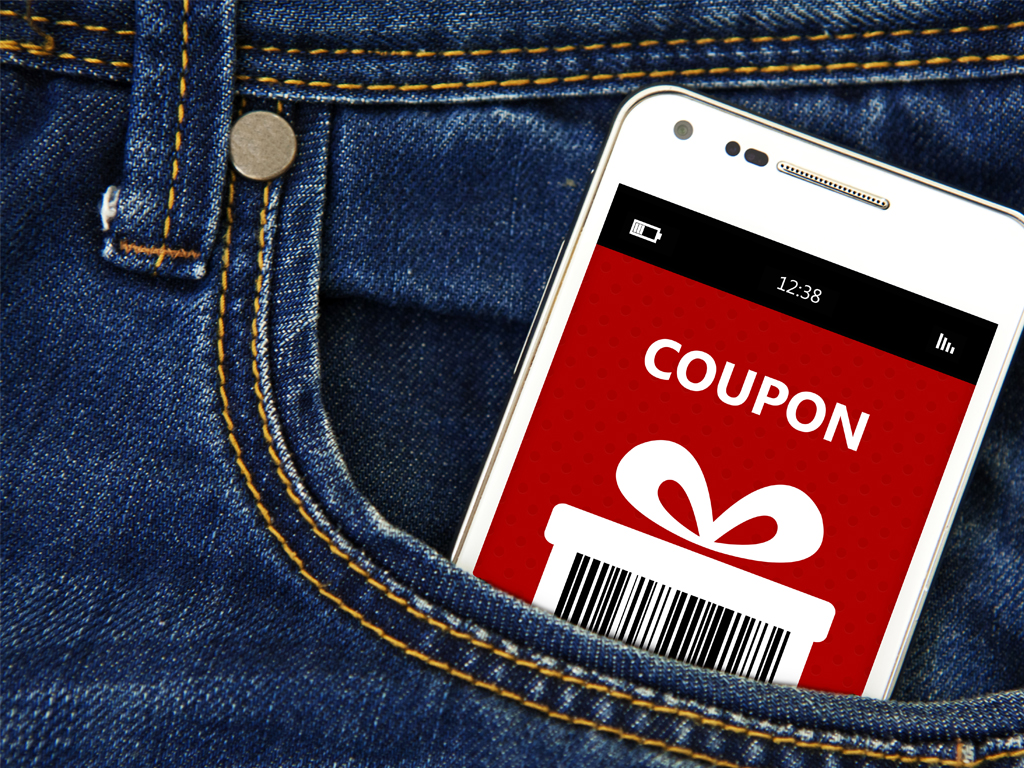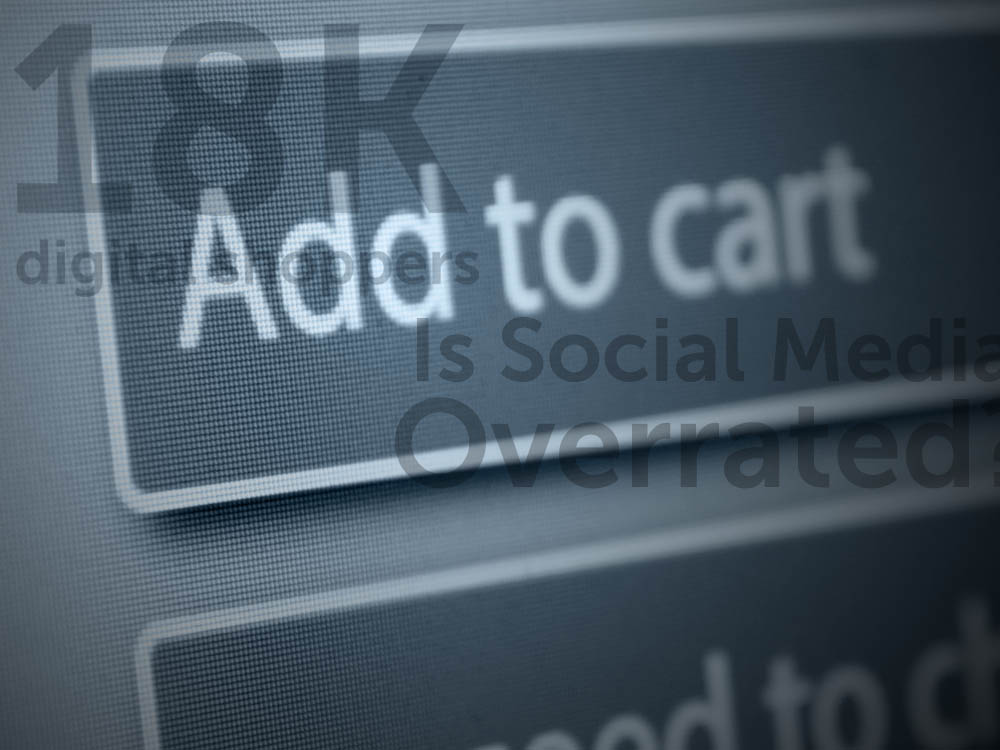Everyone shops for groceries. It’s unique as a market in that the target market encompasses people from all kinds of demographics and social strata. It also remains as one of the greatest opportunity markets that digital has not managed to significantly disrupt. G/O Digital’s ‘CPG Marketing Reinvented’ Report explores how digital marketing initiatives are making an impact on how consumers are shopping for groceries.
Once upon a time, grocery incentives were entirely the realm of magazines, circulars, and coupon clippers. But now brands are upping their digital marketing activities. Today, you’re just as likely to see shoppers swiping and scanning products and coupons on their smartphones as you are to see paper coupons handed over at the checkout.
It’s meant that brands are having to revisit their online/offline marketing efforts with a degree of innovation. Recently, we’ve seen brands refresh coupon and discount offerings, via digital circulars, and personalized advertising on social media.
A survey by G/O Digital of 1,000 U.S. moms and dads interested in grocery shopping has found that 32 percent of moms and 24 percent of dads cited digital circulars as the “number one type of advertising to persuade them to make an in-store purchase,” well above the equivalent figures for direct mail, social media, mobile, and TV advertising.

The study also indicated that shoppers have a strong response to personalised advertising, with 79 percent of moms, and 60 percent of dads saying that they were more likely to purchase a grocery item at their local supermarket as a result of personalised advertising on a digital circular. According to the study, these kinds of advertisements are so powerful because they “weave promotions and deals into grocery shoppers’ existing behaviours — rather than disrupting them,” and they do this to fullfil different stages of the buyer journey.

Facebook: The Most Valuable Social Platform For Grocery Shoppers
One of the more surprising revelations of the report: Facebook was by far the most valuable social media platform in the CPG industry. Over half, 55 percent of moms, and 47 percents of dads, chose Facebook as the most useful social media channel to engage with grocery brands. Twitter, on the other hand, had only 5 percent of moms and 7 percent of dads finding it useful as an incentive to purchase products.

12 Key Findings About Digital Shopper Behavior
1) Google search ads initiate consideration for CPG brands
The search giant takes the lead as the first channel both moms (64 percent) and dads (67 percent) use before visiting a food/beverage brand’s website, mobile site, app or their local supermarket.
2) CPG Brand Success Hinges on Digitized Coupon Clipping
Nearly half of moms (45 percent) and dads (40 percent) reported they most want the ability to clip and add deals (like coupons) digitally to their loyalty cards.
3) Deal content distributed across digital channels Flex More Marketing Muscle Than TV Ads
32 percent of moms and 24 percent of dads cited digital circular content as the number one type of ad to persuade them to make an in-store purchase. In stark contrast, TV ads have significantly less sway over moms (6 percents) and dads (13 percents).
4) Personalized ads moves shoppers from screens into aisles
79 percents of moms and 75 percent of dads are more likely to make an in-store purchase when they receive locally personalized deals.
5) Future of Retail Will Be Played Out In Digital Pre-Shopping Funnel As Webrooming Helps Parents Track Down Deals
When asked if they use their desktop/laptop computer, smartphone or table to pre-search for “on sale” food/beverage items, 40 percent of moms responded “yes, this is the first thing I do.”
6) Mobile deals and in-app promotions bring the web in-store
When asked about the value of digital promotions and circulars while standing in-store, 19 percent of moms replied that “it’s very important… I regularly check websites, mobile sites and apps for brand/product-specific promotions and deals” and another 36 of moms believe “it’s somewhat important… I am more likely to purchase an item in-store if I find a coupon or deal online.”
7) Low prices trump loyalty to preferred stores
When asked if online/mobile searches for “on sale” items influence which supermarket they visit, 60 percent of moms and 50 percent of dads answered “Absolutely, I would be very inclined to visit a local supermarket that offers/advertises the lowest prices and special deals.”
8) Facebook trounces Twitter and king of social
Over half of moms (55 percent) and just slightly less than half of dads (47 percent) believe Facebook is the most useful social media channel to engage with CPG brands. Conversely, Twitter is close to the bottom of the pile with only 5 percent of moms and 7 percent of dads finding it useful.
9) Local Facebook offers are in high demand
77 percent of moms and 72 percent of dads overwhelmingly believe localised deals/offers on Facebook are important enough to affect the food/beverages items they drop into their grocery shopping carts.
10) Social proof and credibility steers shoppers into store aisles
39 percent of moms and 39 percent of dads care most about customer reviews/ratings when engaging with food/beverage brands on Facebook
11) Resistance to Facebook Ads is costly mistake for CPG brands
39 percent of moms and 42 percent of dads reported clicking on Facebook ads at least once a week before visiting their local supermarket.
12) One-size-fits-all online and mobile ads will deplete in-store sales
When asked what is the most frustrating about online and mobile ads from food/beverage brands, 35 percent of moms and 29 percent of dads cited “information and promotions that are not locally relevant to products/prices in-store.”
(source: CPG Marketing Reinvented, G/O Digital)
The Digital Pre-Shopping Funnel
The overwhelming takeaway for marketers from GO Digital’s report is for brands to pay close attention to the way their consumers are behaving, and to find innovative ways to incentivize them without disrupting their established shopping preferences.
As consumers use a more diverse range of devices interchangeable, the report summarises, “CPG marketers must take notice and find new, innovative ways to make it easy, efficient and engaging for them to browse, clip and redeem those deals, no matter where they may be”.
“The lesson for CPG marketers and grocery retailers is simple. Focus more on consumer behaviours and less on channel-specific tactics. Because parents… are highly-organized planners, there is an opportunity for CPG marketers to be extremely targeted and relevant in the messages, offers and ads served to them on their desktops/laptop computers, and on smartphones and tablets as well.”
Digital marketers should be looking to provide consumers with personalised offers that solve the real-time, local needs — as the shoppers are indicating that this is most effective way to influence their in-store sales.
You can download G/O Digital’s full ‘CPG Marketing Reinvented’ Report here.
What are your best stories about digital disruption in the grocery market?


